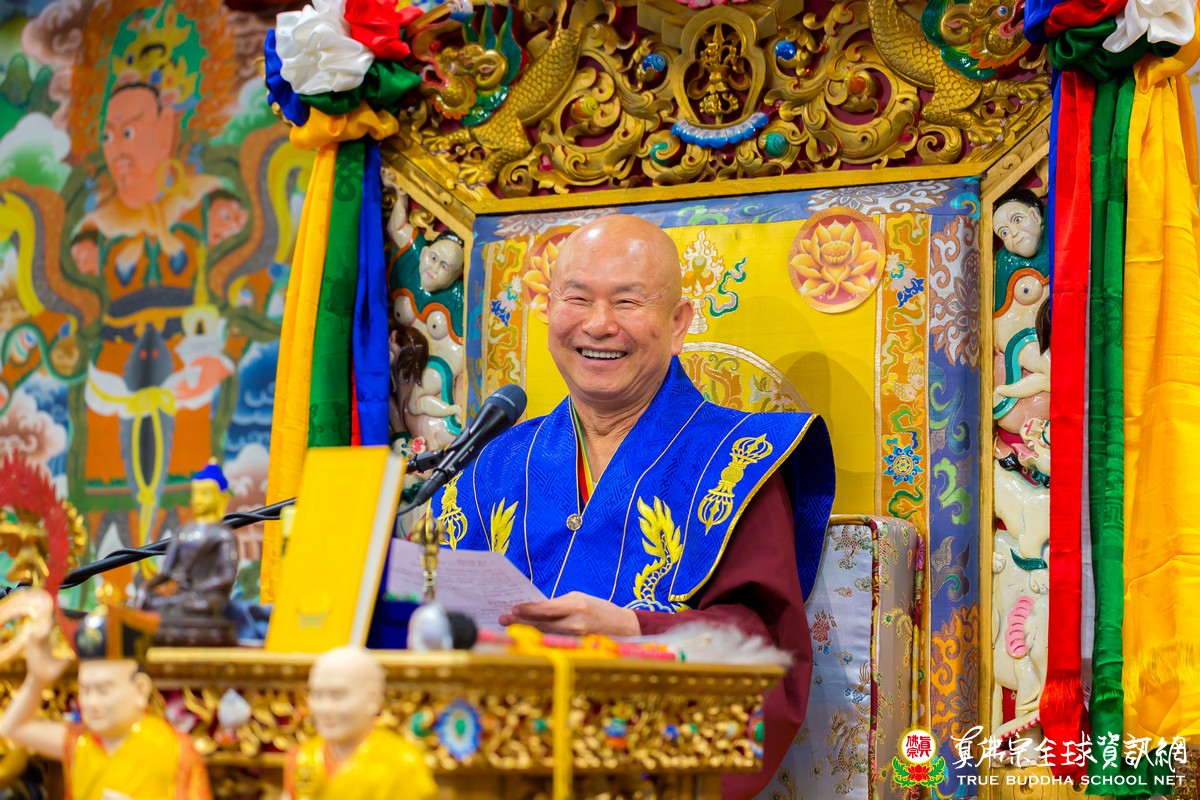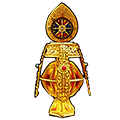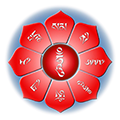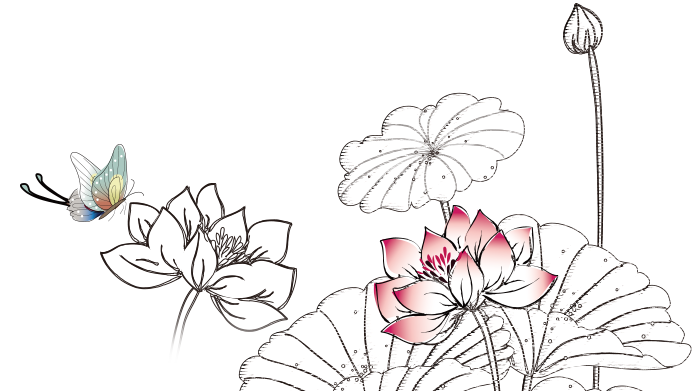
Vajracchedika Prajnaparamita Sutra
Vajra Sutra (Diamond Sutra)
Detailed Exposition by Living Buddha Lian-Sheng, Grandmaster Sheng-yen Lu
Translated into English by True Buddha School Vajra Sutra Translation Team
Discourse 5, 8 August 2021 - Chapter One—The Setting of the Dharma Teaching (continued)
The discourse yesterday was on The Setting of the Dharma Teaching.
Thus have I heard. One time the Buddha was staying at Anathapindika Monastery at Prince Jeta’s Grove, near the great city of Sravasti, with an assembly of 1,250 monks. When it was mealtime, the World-honored One donned his sanghati robe, took up his alms bowl, entered Sravasti and went from door to door asking for food. After the almsround, he returned to the monastery and ate his meal. He then put away his robe and bowl, washed his feet, prepared his seat and sat down.
I explained about this piece yesterday. I wanted to know if everybody understood what I meant, so I asked some people afterwards. I had explained its meaning yesterday, but there is an even deeper meaning.
Someone asked how I cultivate spiritually, to which I answered, “by eating and sleeping.” That person replied that everyone can do that. [laughter] Spiritual cultivation is about eating and sleeping, that is correct. The Setting of the Dharma Teaching talked about eating, dressing, washing and sleeping; so those are eating and sleeping. The person who asked Grand Master the question was very happy, he thought he knew how to cultivate spiritually. Yet, that’s not the case, for there is meaning behind all this. Eating is not as simple as it seems. When you eat, you make offerings. When you eat, you perform bardo deliverance. When you eat, you purify. That would be true eating.
What about sleeping? Do you know that it’s got a special meaning as well? In actual spiritual cultivation, one knows that it is only a dream, but do you know? When I have a bad dream, I can transform it into a good one. How about you, can you do that? I can do dharma practice in my sleep, can you? So, it’s different! That’s the real meaning.
The life of the Buddha seems exactly the same as that of an average person, eating and sleeping; however, it is very different. Even though on the surface, it is the act of eating and sleeping, in its deepest meaning, it differs from what mundane people do. It is different; do not equate them, for everybody knows how to eat and sleep.
Someone asked Grand Master Lu, “how do you cultivate spiritually?” I answered, “Eating and Sleeping.” Everybody can do it, but let me tell you, nobody can do the real thing. Do you know how to make an offering? Do you know how to do bardo deliverance? Do you know how to purify? Eating has these three special implications.
As for sleeping, you’re aware it is a dream; you can change your dream, you can practice in dreams, and you are doing real purifications. Do you know how to do that? As a tantric practitioner, you need to know.
Moreover, let me tell you that there are other profound meanings behind eating, dressing, lodging and traveling, which are all spiritual cultivation, as well as purification.
Mahakasyapa epitomized ideal monkhood practices; his ways of eating, dressing, lodging and traveling were extraordinary. His ascetic practice was through annihilation. What was he eliminating? He slept in between tombstones in cemeteries, under the trees or inside caves. He never slept on beds and never touched money. His eyes would never gaze at a bhikkhuni or an attractive woman; he would lower his head. That’s how foremost ascetic cultivation had been. If you look at the eyes of beautiful ladies, you’d be electrified. You’ll die if you dare to gaze into the eyes of attractive women. The monk Xuan Zhang of the Tang Dynasty met the spider genie, if that had been you, you would have been glued to her spider web and eaten up.
Therefore, being an Arhat consists of the elimination of the six thieves [senses]: eyes, ears, nose, tongue, body and mind. Mahakasyapa never touched money, in fact he had no money at all. When it came to the opposite sex, Mahakasyapa would lower his head. He never cared for name or fame.
He left the sangha because there were contentions inside the sangha. For instance, Devadatta contested Sakyamuni Buddha for the sangha later during the Buddha’s life. Devadatta had cultivated very well; he obtained thirty marks of perfection and eighty marks of proper conducts;[1] whereas Sakyamuni Buddha obtained thirty-two marks of perfection, as well as eighty marks of proper conducts. Devadatta had only a difference of two marks of perfection from Sakyamuni Buddha with the same eighty proper conducts, yet he still wanted to become the leader. He wished that the aging Sakyamuni Buddha would go soon; he felt it was his turn to become the leader. It was as if he were saying, why hold on to a post whilst not doing anything and not letting anyone else take over?
Devadatta wanted to lead. He had such thought because he craved for name and position, thus his desire for fame became his downfall. There were also instances of downfall due to food. Instead, look at Mahakasyapa! He ate the cheapest things, and in his mind, he thought of the food to be poo and pee. Humans have five major desires: wealth, sex, fame, food and sleep. Mahakasyapa destroyed them all. This is the profound meaning of the first section. Nobody except Grandmaster Lu has explained it this way, right?
Ananda was a lazy pig; he ate until he became fat. He always courted with women, loved eating and was lustful. He wanted to enjoy everything. Among the ten chief disciples, Ananda was the only one who did not have any realms nor attainments before the Buddha entered parinirvana. Only afterwards did Ananda started to cultivate spiritually. The other nine chief disciples all had attainments by the time Buddha entered parinirvana.
In the Buddha’s sangha, there were Sariputra and Moggallana. They each had their own followers prior to taking refuge in Sakyamuni Buddha. Sariputra was an elder, so was Moggallana. Sariputra was first and foremost in wisdom, and Moggallana was first and foremost in supernatural power. Both perceived Sakyamuni Buddha’s dharma teachings to be truly remarkable, and so they led their followers to take refuge in Sakyamuni Buddha. That was why the Buddha’s sangha became very large. The Buddha respected Sariputra and Moggallana, who themselves were leaders; the Buddha also respected Mahakasyapa. Even though Mahakasyapa left the sangha, the Buddha still asked him to return several times. Yet he rejected until the time of the Buddha’s parinirvana, when he rushed back immediately to bid farewell to Sakyamuni Buddha.
Sakyamuni Buddha highly respected Mahakasyapa as he was most earnest in his spiritual cultivation. Ananda was most earnest in playing hooky, so Mahakasyapa very much disrespected Ananda. Although eventually Ananda also did earnest spiritual cultivation, it was due to Mahakasyapa’s urging. They never got along. Ananda was attending to Sakyamuni Buddha, yet he was such a lazy pig, so Mahakasyapa quietly left the sangha.
Later on, he guided many people onto the path, and he had many followers. When the Buddha entered parinirvana, he returned to the Buddha’s side. Ananda wanted to lit Buddha’s cremation fire, but it was unsuccessful despite several tries. Only after Mahakasyapa returned could the fire be lit. That showed that Sakyamuni Buddha truly respected Mahakasyapa; he waited for his return.
This is [the exposition on] Chapter One—The Setting of the Dharma Teaching. Its profundity is in the annihilation of the daily life: eating, dressing, lodging and traveling; to destroy desires for wealth, sex, fame, food and sleep; and to close off the eyes, ears, nose, tongue, body and mind. Those are the key points of this section.
Has anybody expounded the Vajra Sutra this way? Have you ever listened to other people explaining it this way? Perhaps, and perhaps not. But this is how Grandmaster expounded it, explaining the profundity of this chapter.
[1] Eighty proper conducts by complying to the Buddhist moral ethics completely and result in mystical bodily marks. Also called eighty unique characteristics.
Next discourse on the Vajra Sutra: Discourse 6, 14 August 2021 - Chapter Two—Subhuti’s Request
Previous discourse on the Vajra Sutra: Discourse 4, 7 August 2021 - Chapter One—The Setting of the Dharma Teaching (continued)
Index of links to all discourse on the Vajra Sutra: https://en.tbsn.org/guidem/detail/2265/
Back to the main index page of all dharma discourse: https://en.tbsn.org/guidem/index
Full webcast of 2021.08.08 Hevajra Homa Ceremony (Rainbow Temple, North Bend, USA) and dharma discourse with English interpretation: https://youtu.be/WNx6uCBJE9w




